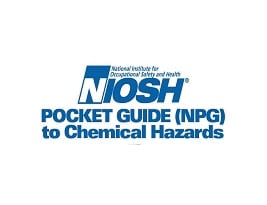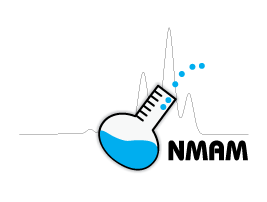Manganese

Overview
CAS No.7439-96-5 (metal)
CAS No. 108-38-3 (cyclopentadienyl tricarbonyl)
CAS No. 106-42-3 (tetroxide)
Manganese (Mn) is a hard, gray metal that is frequently used in the production of steel. Workers may be harmed from exposure to manganese through the breathing of manganese fumes or dusts. Continued exposure can damage the lungs, liver, and kidneys. Exposure to manganese dust or fumes can also lead to a neurological condition called manganism. Manganism’s symptoms, similar to those of Parkinson’s disease, may include the following: trembling, stiffness, slow motor movement and potentially severe depression, anxiety and hostility. The level of exposure depends upon the dose, duration, and work being done.
Workers most at risk of being exposed to manganese often perform welding tasks. Welding occurs in the construction, manufacturing, transportation, mining, and agriculture industries and other occupations, such as pipe-fitters or millwrights. Somewhat smaller numbers of workers in the metallurgical and other manufacturing industries are also at risk.
NIOSH recommends that employers use Hierarchy of Controls to prevent injuries. If you work in an industry that uses manganese, please read chemical labels and the accompanying Safety Data Sheet for hazard information. Visit NIOSH’s page on Managing Chemical Safety in the Workplace to learn more about controlling chemical workplace exposures.
The following resources provide information about occupational exposure to manganese. Useful search terms for manganese include “colloidal manganese,” “manganese-55,” and “manganese metal.”
NIOSH Chemical Resources
Related NIOSH Resources
- NIOSH Pocket Guide main search results:
- Manganese compounds and fume (as Mn) (CAS No. 7439-96-5)
- Manganese cyclopentadienyl tricarbonyl (CAS No. 108-38-3)
- Manganese tetroxide (as Mn) (CAS No. 106-42-3)
- NIOSHTIC-2 search results for manganese —NIOSHTIC-2 is a searchable database of worker safety and health publications, documents, grant reports, and journal articles supported in whole or in part by NIOSH.
- NIOSH Immediately Dangerous to Life or Health Concentrations (IDLH) of Manganese—NIOSH reviews scientific data and researches methods for developing IDLH values.
- NIOSH Safety and Health Topic—Welding and Manganese: Potential Neurologic Effects —This NIOSH safety and health topic page provides links to resources to help workers and employers identify and control
Selected Publications
- NIOSH Criteria for a Recommended Standard: Welding, Brazing, and Thermal Cutting—DHHS (NIOSH) Publication Number 88-110
Related Resources
- Agency for Toxic Substances Disease Registry (ASTDR)—ToxFAQs: Manganese
- ASTDR—Toxicological Profile for Manganese
- Environmental Protection Agency (EPA) Chemistry Dashboard: Manganese
- EPA—Environmental Manganese: Guideline Exposure Levels, Evidence of Health Effects and Research Needs
- EPA—Health Effects Notebook for Hazardous Air Pollutants
- EPA—Manganese, CASRN 7439-96-5, Integrated Risk Information System (IRIS) Summary
- National Library of Medicine (NLM)—Hazardous Substance Data Bank: Manganese
- NLM—Haz-Map: Manganese
- Occupational Safety and Health Agency (OSHA)—Hazard Communication
- OSHA—Safety and Health Topics: Manganese Fume
- OSHA—Safety and Health Topics: Manganese Compounds
- OSHA—Chemical Sampling: Manganese Cyclopentadienyl Tricarbonyl
- OSHA—Occupational Guideline for Manganese
- United States Geological Survey: Manganese
- New Jersey Hazardous Substance Fact Sheets: Manganese
International Resources
- Canadian Centre for Occupational Health and Safety (CCOHS) Welding – Fumes and Gases
- OECD—eCHEM Portal search results for manganese
- European Chemicals Agency (ECHA) search results for manganese
- International Labour Organization (ILO)—International Safety Cards: Manganese
- International Programme on Chemical Safety (IPCS)—INCHEM search results for manganese
- Institute for Occupational Safety and Health of the German Social Accident Insurance—Gestis Substance Database search results for manganese



